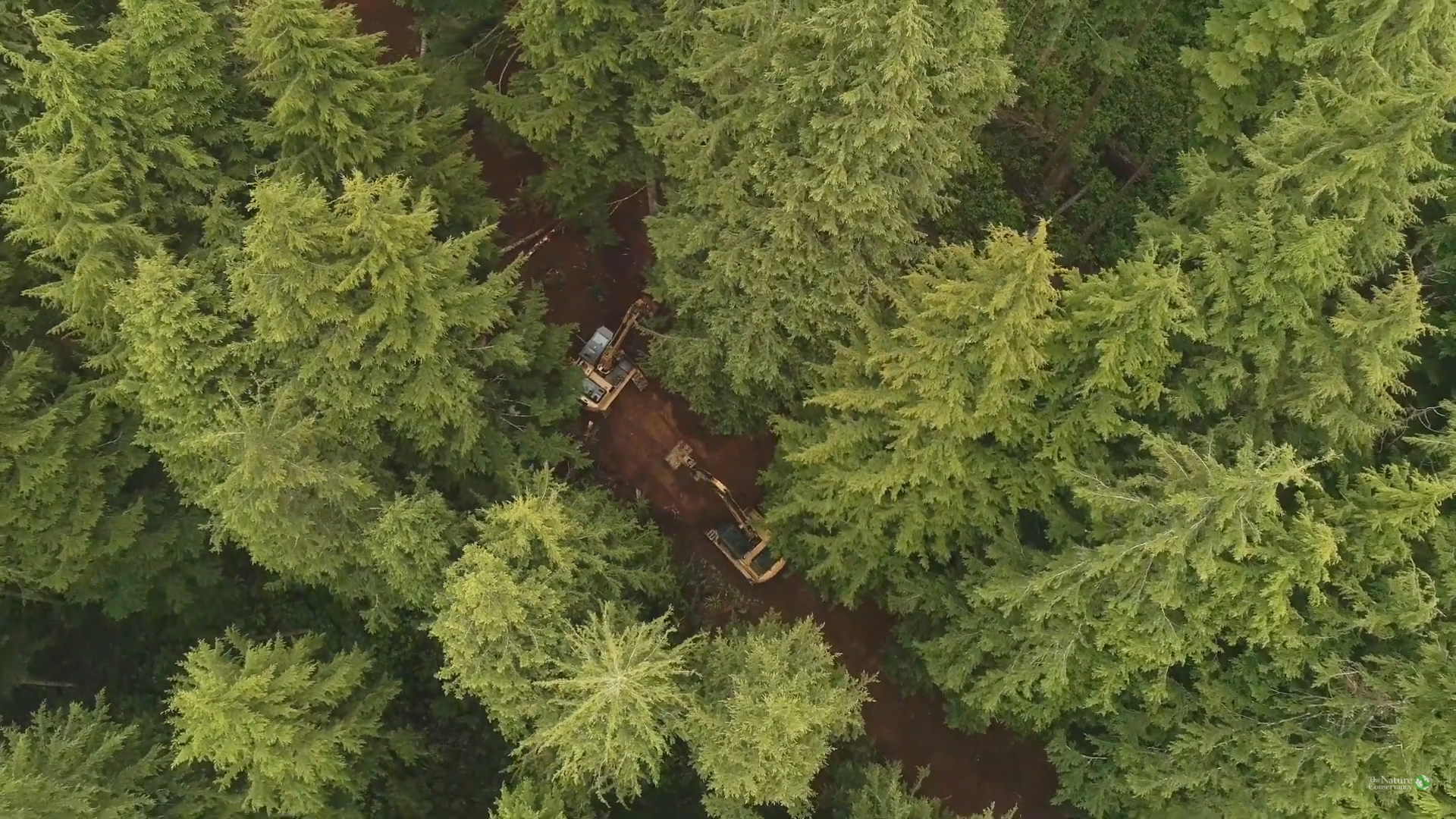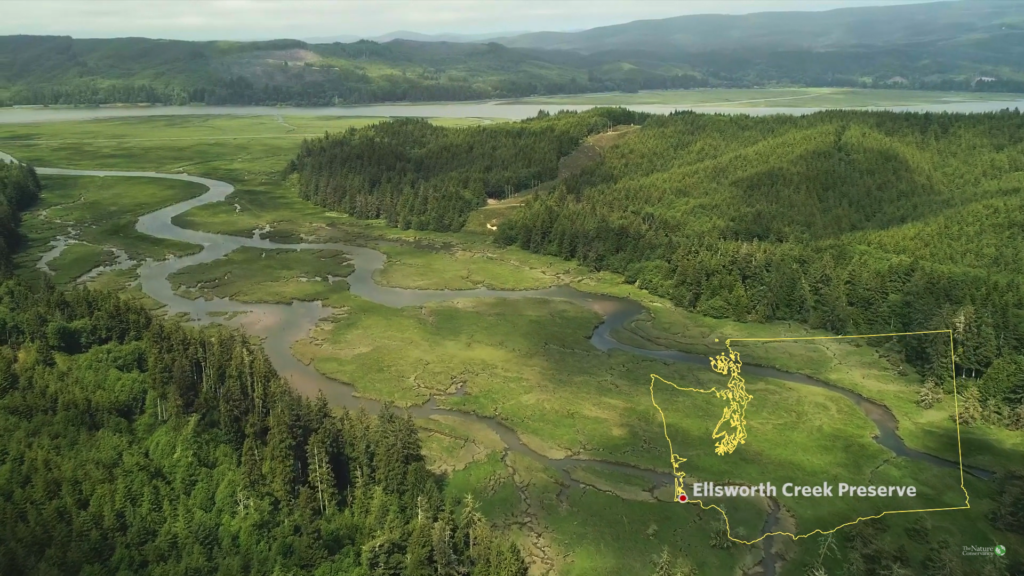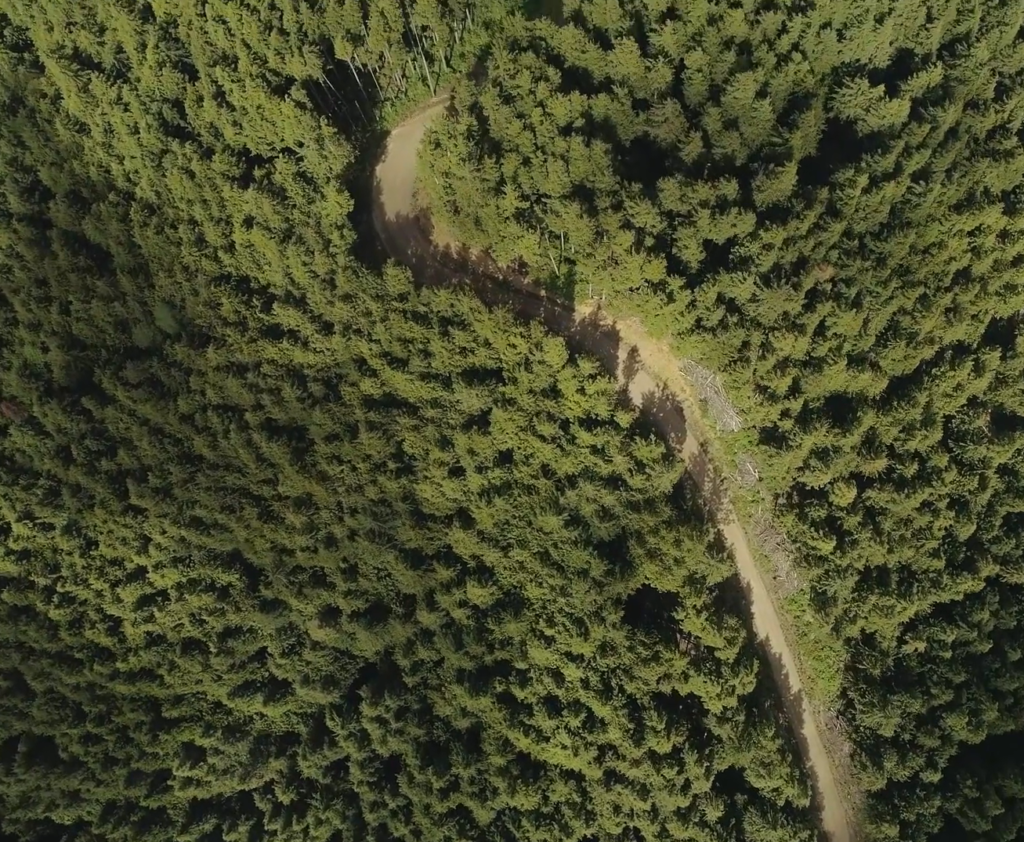The Not-So-Open Road: Road Decommissioning at Ellsworth Creek Preserve

In forest systems, hydrology and road systems are at odds with one another.
Water wants to run down slopes and avoid barriers, while roads cut across slopes and aim to stay put. Managing your road system to minimize erosion and runoff takes forethought and more than a bit of careful engineering.
Kyle Smith, the Forest Manager for The Nature Conservancy (TNC) of Washington, is a self-described road engineering geek and has taken great care in consolidating and updating the road system at Ellsworth Creek Preserve. The 8,000 acre preserve, which is FSC certified through NNRG’s group certificate, is located near the southwest Washington coast and contains both old growth and endangered species habitat. The preserve receives about ninety inches of annual rainfall, and that amount of precipitation can have some large impact on roads and the hydrology of the landscape.

Over the course of twenty years TNC has consolidated the Ellsworth Creek watershed from eight different landowners into one. Due to these former ownership patterns, many of the roads were located in poor locations to stay within the ownership boundaries, making the roads at risk for failure and impacting the salmon bearing streams. Anticipating further flooding and erosion from storm events, TNC developed a long term management plan which includes building new roads to consolidate the ownership, maintain and upgrade existing roads and decommission or remove roads that have potential to fail, or are unnecessary for management.

According to the Forest Service, there are five levels of road decommissioning:
- Blocking the road entrance and allowing nature to encroach
- Revegetation and waterbarring to prevent erosion
- Removing fills and culverts
- Establishing drainage ways and removing unstable road shoulders
- Full obliteration recontouring and restoring natural slopes
Over the last fifteen years, twenty-five miles of roads have been decommissioned at the Ellsworth Creek Preserve, and TNC has built seven miles of well-drained roads along the watershed’s ridgeline. These new roads move vehicles away from streams and have a lower impact on Ellsworth’s hydrology. In addition to road decommissioning, over fifty miles of roads have been upgraded, including re-establishing ditches, crowning the road surfaces and increasing the size of culverts to reduce impacts of climate-worsened storm events. Keeping roads in good shape has been one of the largest expenses in managing Ellsworth, but is also one of the largest investments. Having a well-designed transportation network reduces the amount of maintenance needed in the long-term and allows TNC to direct financial resources to other important projects.
A time-lapse of a section of road being decommissioned at Ellsworth Creek
Aside from supporting better hydrology and conserving resources, the new roads located along the ridgetops has an additional benefit: TNC is undertaking thinning projects to encourage the growth and carbon sequestration of Ellsworth’s trees, and the ridgetop roads reduce the risk of sediments from entering streams while also supporting the cable-based logging that minimizes impacts on the land.
The road decommissioning work fits into the jigsaw puzzle of Ellsworth Creek’s overall management plan. TNC has three different management approaches in different parts of the forest, with the ultimate aim of figuring out the best ways to restore an entire forested watershed and what types of management (including road decommissioning and thinning) are most effective in creating diverse and resilient forests. The road to answering those questions is a bit longer, but within reach.
More information on road maintenance & Ellsworth Creek
You can find more information about Ellsworth Preserve’s experiments with different management approaches and long term plans to accelerate the emergence of old growth in a recent Seattle Times article and in this video by The Nature Conservancy.
For a short visual overview on road maintenance, take a look at WA DNR’s publication on Forest Roads.
For more (much more!) information about road building, maintenance, and decommissioning, check out Pacific Watershed’s helpful guidebook, Handbook for Forest, Ranch and Rural Roads.
All images by The Nature Conservancy

Leave a Reply